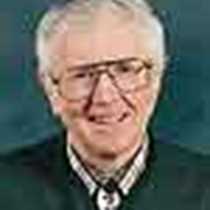Hanus Bay/Lake Eva/Peril Strait
A fresh southeaster ruffled Hanus Bay and strummed the forest as we began our final morning of hiking and kayaking.
Bunchberry blazed white on the bank at the forest edge where our trail began to Lake Eva. This miniature member of the dogwood family forms large beds wherever sunlight streams through the forest canopy.
An evergreen ground cover, it sustains birds and forest mammals around the year. And it delights our guests on every Southeast Alaska forest walk. The snowy white “flowers” are modified leaves called bracts. At their centers are tight clusters of tiny purple flowers that form scarlet mealy fruits or berries.
The evergreen leaves are retained all winter long, in or out of snow cover, and are a vital food source for Sitka black-tailed deer. Because of its kinship with dogwood trees my Alaska family calls these miniatures “puppy woods.”
Some guests chose the longer “power” hike to Lake Eva and return. The others took a slow contemplative naturalist walk through forest and tide meadow to rapids where Lake Eva Creek joins the salt chuck.
Below these rapids salmon hordes start to gather in July – chum, pink, sockeye, and coho. The banquet is then set for the brown bears. Lake Eva on Baranof Island off Peril Strait is as productive of salmon, cutthroat trout, Dolly Varden and steelhead as any stream its size in this state. In part this is because of the lake’s nutrient level for young fish, which both over-winter and rear there.
Below the rapids the creek meanders through an inertial zone of sheltering forest and sedge meadow. In this food rich area loaded with crustaceans young salmon, trout and steelhead complete their development for journeys in the sea. It was here our kayakers also found shelter. Some managed to paddle up a surging tidal raceway and then speed down for another try.
A pair of red squirrels challenged hikers on the Lake Eva Trail when they paused by their cone midden under a soaring Sitka spruce. Spruce cones are the mainstay of the squirrel diet in the coast rain forest.
To extract each seed they roll each cone in their forepaws while chewing off the scales. Cone spindles and scales fly onto the ever-growing pile.
Guests had a laid back afternoon while Sea Lion cruised through misty rain looking for one more sighting of whale, porpoise or bear. And we found the three brown bears grazing in a sedge and beach rye grass meadow.
A fresh southeaster ruffled Hanus Bay and strummed the forest as we began our final morning of hiking and kayaking.
Bunchberry blazed white on the bank at the forest edge where our trail began to Lake Eva. This miniature member of the dogwood family forms large beds wherever sunlight streams through the forest canopy.
An evergreen ground cover, it sustains birds and forest mammals around the year. And it delights our guests on every Southeast Alaska forest walk. The snowy white “flowers” are modified leaves called bracts. At their centers are tight clusters of tiny purple flowers that form scarlet mealy fruits or berries.
The evergreen leaves are retained all winter long, in or out of snow cover, and are a vital food source for Sitka black-tailed deer. Because of its kinship with dogwood trees my Alaska family calls these miniatures “puppy woods.”
Some guests chose the longer “power” hike to Lake Eva and return. The others took a slow contemplative naturalist walk through forest and tide meadow to rapids where Lake Eva Creek joins the salt chuck.
Below these rapids salmon hordes start to gather in July – chum, pink, sockeye, and coho. The banquet is then set for the brown bears. Lake Eva on Baranof Island off Peril Strait is as productive of salmon, cutthroat trout, Dolly Varden and steelhead as any stream its size in this state. In part this is because of the lake’s nutrient level for young fish, which both over-winter and rear there.
Below the rapids the creek meanders through an inertial zone of sheltering forest and sedge meadow. In this food rich area loaded with crustaceans young salmon, trout and steelhead complete their development for journeys in the sea. It was here our kayakers also found shelter. Some managed to paddle up a surging tidal raceway and then speed down for another try.
A pair of red squirrels challenged hikers on the Lake Eva Trail when they paused by their cone midden under a soaring Sitka spruce. Spruce cones are the mainstay of the squirrel diet in the coast rain forest.
To extract each seed they roll each cone in their forepaws while chewing off the scales. Cone spindles and scales fly onto the ever-growing pile.
Guests had a laid back afternoon while Sea Lion cruised through misty rain looking for one more sighting of whale, porpoise or bear. And we found the three brown bears grazing in a sedge and beach rye grass meadow.




